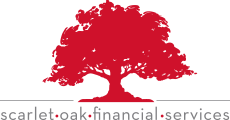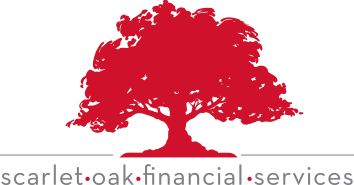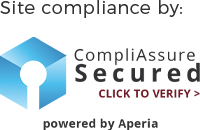Introduction
In the fast-moving world of business, cash flow flexibility can be the difference between surviving a slowdown and seizing a growth opportunity. A business line of credit offers a valuable financial tool that gives business owners access to short-term capital on demand, without the commitment of a traditional loan. Whether used to smooth out seasonal cash flow fluctuations, fund a large inventory purchase, or cover payroll during a delay in receivables, a line of credit can act as a critical financial safety net.
But simply having access to a line of credit isn’t enough. To get the most benefit, it must be managed wisely. This means more than just tracking balances or making timely payments; it involves applying strategically, maintaining strong financials, staying ahead of lender requirements, and leveraging the credit line to support business goals without overextending your operations. Understanding the structure, limitations, and best practices for managing a business line of credit can help ensure it’s a resource, not a risk.
What is managing a business line of credit?
A business line of credit is an agreement between a commercial bank and a business specifying the amount of unsecured short-term borrowing the bank will make available to the firm over a given period of time. The agreement is usually made for a period of one year and often places certain constraints on the borrower. A line of credit agreement is not a guaranteed loan; rather, it specifies that if the bank has sufficient funds available, the bank will allow the business to borrow up to a certain amount of money.
Managing a business line of credit involves ensuring that appropriate financial documentation is compiled when submitting the loan application, that the application for the line is made well before credit is needed, and that the business’s cash flow will allow payments to be made in a timely fashion.
How does it work?
A line of credit is most often used by small businesses with short-term or seasonal cash needs, or with unpredictable cash flow needs. It works in a manner similar to credit card loans. Basically, a bank agrees to set aside a certain amount of money for a specified period of time (for a fee of up to 2 percent, usually), which you can draw on as needed. The interest rate on a line of credit is normally stated as a floating rate (e.g., the prime rate plus a percentage). If the prime rate changes, the interest rate charged on new as well as outstanding borrowings will automatically change. The charge a borrower must pay in excess of the prime rate depends on the borrower’s creditworthiness; the more creditworthy the borrower, the lower the interest increment above prime. One advantage of a line of credit is that although no interest is accrued until the funds are withdrawn, the line is immediately available for the company’s cash flow needs.
Operating change restrictions
In a line of credit agreement, a bank may impose “operating change restrictions” that give the bank a contractual right to revoke the line if any major changes occur in a business’s financial conditions or operations. Your business is usually required to submit for review (on a periodic basis) its current financial statements. Some lenders request audited financial statements. In addition, the bank typically requires notification of changes in key managerial personnel or in the firm’s operations before such changes take place. This is because such changes may affect the future success and creditworthiness of the firm.
Compensating balances
To ensure that the borrower will be a good customer, and to increase the bank’s earnings, many short-term unsecured bank loans require the borrower to maintain a “compensating balance” in a checking account equal to a certain percentage of the amount borrowed. Compensating balances of 10 percent to 20 percent are frequently required.
Annual cleanups
Many banks also require what is known as an “annual cleanup” to ensure that money lent under a line of credit agreement is actually being used to finance seasonal needs. This means that the borrower must have a loan balance of zero (i.e., the business must owe the bank nothing) for a certain number of days during the year. Forcing the borrower to carry a zero balance for a certain period of time ensures that short-term loans do not turn into long-term loans.
How does a revolving line of credit differ from a line of credit?
A revolving credit agreement is nothing more than a guaranteed line of credit. It is guaranteed in the sense that the commercial bank making the arrangement assures the borrower that a specified amount of funds will be made available regardless of the scarcity of money. The interest rate and other requirements for a revolving line of credit agreement are similar to those for a line of credit. Often (but not always), revolving credit agreements last for a period greater than one year.
Since a bank guarantees the availability of funds to the borrower, an annual commitment fee is normally charged on a revolving credit agreement. Although more expensive to the borrower than a business line of credit, a revolving credit agreement can be less risky from the borrower’s viewpoint, since the availability of funds is guaranteed by the bank.
How do you apply for a line of credit?
Before extending a line of credit, most banks will expect you to provide your company’s financial statements from the last three years, plus business projections for the next five years. A bank also wants to know how you propose to repay the loan. Ideally, you should repay it out of cash flow.
Your financial statements should be reasonably detailed, and projections should make sense. Most banks will like to see audited statements but might consider an unaudited application. You must file a “Sources and Uses of Funds Statement” explaining why you need the loan and how you propose to pay it back. Depending on the size and financial condition of your business, the bank may demand collateral as security (and sometimes a personal guarantee from the business owner). If collateral is required, the bank will often look to your inventory, machinery, and equipment.
How do you manage a business line of credit?
Managing a business line of credit involves ensuring that appropriate financial documentation is compiled when submitting the loan application, that application for the line is made well before credit is needed, and that the business’s cash flow will allow payments to be made in a timely fashion.
When submitting financial documentation with your application, it’s often advisable to prepare supplementary data as well, such as a page describing your company’s history, its operating philosophy, and its unique features. You want to present a comprehensive picture of your company so that your loan will be approved and a favorable interest rate will be charged. You might wish to include monthly cash flow projections, a description of your own (and other owners’) resources, financial statements of other businesses you own, and a copy of your lease or deed. It’s wise to make arrangements for your bank line well before your projected credit crunch. As with a standard bank loan, the best time to apply is when you don’t need the money. When an application for a bank line is rejected, it’s often for the same reasons a bank may reject a term loan. In other words, your loan may be rejected if the company has poor liquidity (its ratio of current assets to current liabilities is too low), too much long-term debt (debt-to-equity ratio exceeds 2:1), unstable management, or if there are indications that officers or owners have borrowed funds unconnected to the operations of the business. The cash flow of your business is important because you need cash to pay your loan. If you fail to make your loan payments and have put up collateral, your lender can initiate legal action to seize the assets financed by the loan. You can increase the inflow of cash to your business by tightening your credit policies with customers and by aggressively collecting receivables. You can also try to keep inventory as low as possible, seek up-front payments, increase your prices, and step up sales efforts.
Conclusion
A business line of credit is not just a backstop for emergencies—it can be a strategic financial tool when managed with foresight and discipline. From smoothing out cash flow imbalances to capitalizing on growth opportunities, the flexibility it provides can be a significant asset for businesses navigating the ups and downs of day-to-day operations. However, mismanaging your credit lines, such as drawing too frequently, missing repayments, or using them to cover chronic shortfalls, can lead to financial strain, higher borrowing costs, or even default.
To maximize the value of your line of credit, apply well before you need it, maintain clear and updated financial records, understand your lender’s terms, and proactively manage both inflows and outflows of cash. By treating your line of credit as a disciplined part of your financial strategy, not a fallback, you position your business to remain agile, resilient, and well-prepared for both challenges and opportunities ahead.
Scarlet Oak Financial Services can be reached at 800.871.1219 or contact us here. Click here to sign up for our weekly newsletter with the latest economic news.
Source:
Broadridge Investor Communication Solutions, Inc. prepared this material for use by Scarlet Oak Financial Services.
Broadridge Investor Communication Solutions, Inc. does not provide investment, tax, legal, or retirement advice or recommendations. The information presented here is not specific to any individual’s personal circumstances. To the extent that this material concerns tax matters, it is not intended or written to be used, and cannot be used, by a taxpayer for the purpose of avoiding penalties that may be imposed by law. Each taxpayer should seek independent advice from a tax professional based on individual circumstances. Scarlet Oak Financial Services provide these materials for general information and educational purposes based upon publicly available information from sources believed to be reliable — we cannot assure the accuracy or completeness of these materials. The information in these materials may change at any time and without notice.



